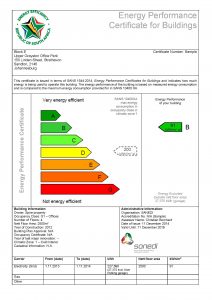[More information about EPC to follow]
The Residential Energy Consumption project is focused around the collection of residential energy consumption data. This data is based upon the types of electrical appliances and their end-use by individuals within the different Living Standard Measure (LSM) across South Africa. The appliance end-use data utilised within the Long-range Energy Alternatives Planning (LEAP) model for analysis, enabling policy makers with a better understanding and visibility of residential energy side. Furthermore, this project supports aspects of the review of the National Energy Efficiency Strategy (NEES) targets, together with the National Standards & Labelling Programme (S&L) impact assessment.





 Figure 1 – A pro-forma EPC (from SANS 1544:2014)
Figure 1 – A pro-forma EPC (from SANS 1544:2014)